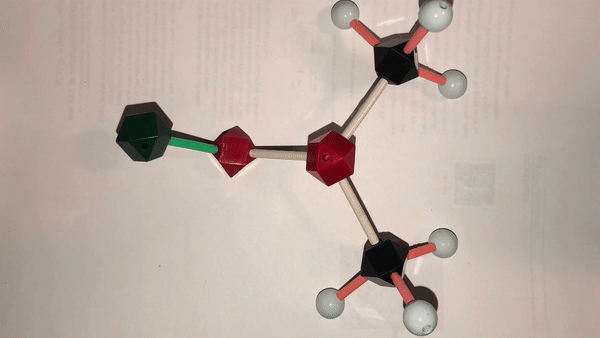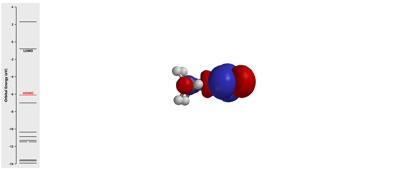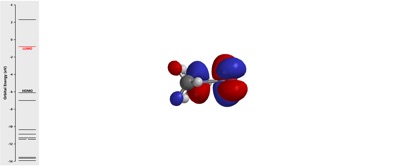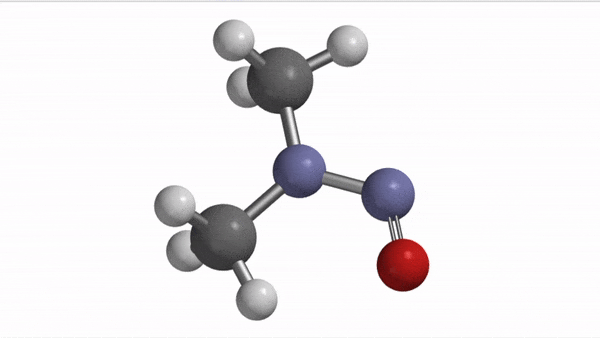Read more about our DMN Research

DMN Data and Research
Where is DMN found?
Concentrations of DMN have been found in bacon, processed foods, drinking water, Nigerian beverages, and natural unprocessed foods such as mushrooms. The general concentrations that are found are 0.1-5 micrograms per kilogram in food. Nitrosamines are formed when introduced to secondary amines.
Synthesis of DMN
The amounts and reagents used in preparation were 8.46g of Sodium Nitrite, 5.09g of dimethylamine hydrochloride, 11.04g of oxalic acid, and 200mL of dichloromethane. This synthesis was carried out with a 500mL round bottom flask, a magnetic stirrer, and stir plate for 1-5 hours. It was filtered through a vacuumed system using petroleum ether and 5.0g of silica gel to absorb water. DMN is an yellow oil like substance when purified by rotovap.
How was the laser energy produced?
The lasers used for dissociation were produced by three lasers in the laboratory. A dissociation, tune-able-proble, and ionization with wavelengths of 389nm, 225nm-227nm, and 355nm. The lasers required coumarin 450 and DCM were used to produce the wavelengths required as well as focal lenses. These dyes were changed throughout the experiment because a loss in energy was noted.
Ion Images
The technique used to capture the ions were velocity mapped ion imaging (VMII). The ions were collected on a phosphorus screen that rest in-front of the camera lens. The camera captured pictures throughout a 30 minute scan that is then summed up in our computer program using Labview. After obtaining a beautiful ion image, it is processed in another program using Matlab called FINA. In FINA we reconstruct the image to find the center of the scan and produce beta values for vector correlations.
What did we find?
The purpose of this experiment was to determine if the amount of energy inputted into DMN affects the geometry of the molecule comparing our study to two others. This was previously studied at room temperature with 363.5nm light and vacuumed conditions at 355nm light in vapor phase. We studied DMN at 368nm light to find out the geometry was not affected by the energy put into the molecule.
Stop-Motion of DMN Dissociation *Blue arrow indicates laser*

Highest Occupied Molecular Orbital (HOMO) of DMN

Lowest Unoccupied Molecular Orbital (LUMO) of DMN

NO bond stretch with a planar configuration

Wednesday, August 21, 2019

